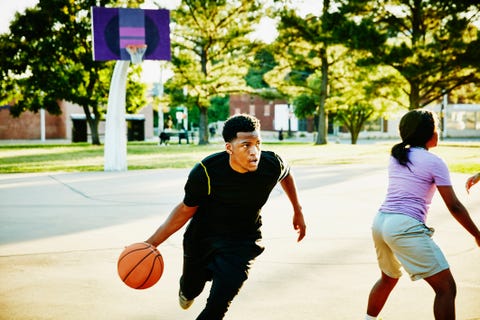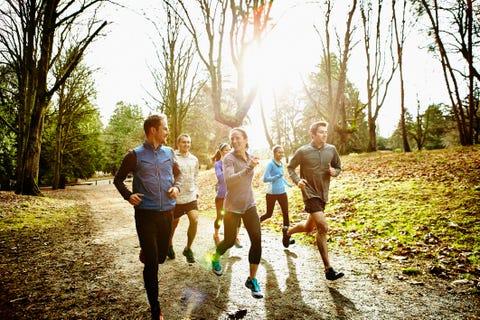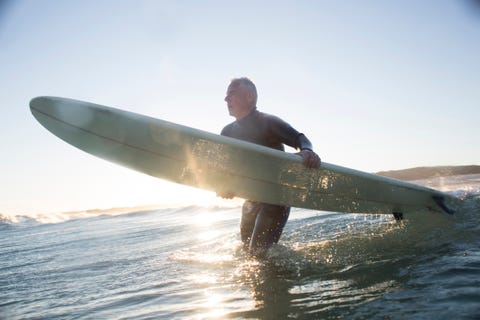For most people, being an athlete is a binary identity. Either you are, or you are not.
Our current sports culture focuses on winning championships, making highlight reels, and increasing individual rankings at every level, from professional to youth sports. Sports parents, coaches, and aspiring athletes are “adultifying” youth participation in hopes of going pro or garnering scholarship opportunities by playing on elite travel teams at increasingly younger ages, rather than focusing in the process of having fun and learning new skills. The culture of being outcome- or product-focused has negatively affected youth sports and how we view athletes at that level.
In the minds of many across all levels, then, the term ‘athlete’ equates to elite athlete, someone at the absolute top level of their given sport. If you can’t make the cut past a certain point, the perception shifts to classify you as just an enthusiast or hobbyist, someone whose focus should lie elsewhere. In the most general sense under this standard, if you are good at sports and you’re actively competing in some sense, you are an athlete.
Or, you are not good at sports. You were picked last for teams at recess and in physical education. In fact, PE often separated out the athletes in class versus those that just took PE. Those that just took PE are thought to be the people that “just work out” when they are adults, meaning they exercise to get in shape without a specific athletic goal. If that describes you, clearly you are not an athlete, right?
The Inclusive Definition of an Athlete
Not so fast! There are multiple sides to every story. Most of us are somewhere along the athlete continuum, so why not find an inclusive way to describe where we are on our path to being an athlete? For example, Bill Bowerman, co-founder of Nike, defined an athlete as anyone with a body.
Project Play also uses an across the population definition of an athlete as anyone with a body. Margaret Whitehead, the modern champion of physical literacy, solves the misunderstanding that only elite athletes ‘count’ by suggesting that we are all athletes, within our given level of endowment.
The bad news is that we can easily get caught in performance ruts because we don’t have the self-efficacy, confidence, or competence in our abilities. This can lead to a performance-limiting downward spiral of what activities we choose, if any at all. In other words, if you still feel like you’re that last pick in PE or you’re unenthused with the options of activities available to you, your drive to perform drops.
At the root of being an athlete is demonstrating athleticism.
Think about how being limited in the choices of play or sports affected you as a youngster (or how it affects your youngsters). You are less likely to stay active if you don’t feel like you’re good at what you’re doing, or that you have no chance to improve.
The radical idea behind an inclusive definition of athlete is that we all deserve every opportunity to improve our athleticism by taking advantage of a broad range of sports, games, play, and fitness activities—not just the narrow definitions provided by mainstream sports and gym class.
Developing Athleticism
If you can’t yet wrap your head around thinking of yourself as an athlete, start to change your mindset by living an athletic lifestyle. Eat like an athlete, train like an athlete, think like an athlete. Thinking like an athlete (i.e. exercising to achieve particular goals and competing with yourself and/or others) will have a positive impact on your performance by changing how you approach your training sessions.
At the root of being an athlete is demonstrating athleticism. Being athletic is more than wearing the latest sports gear or signing up for certain types of fitness classes. Athleticism, as defined by the National Strength and Conditioning Association (NSCA) in their position statement on long-term athletic development (LTAD), is the “ability to repeatedly perform a range of movement skills with style, precision and confidence in a variety of environments, which requires competent levels of strength, power, speed, agility, balance, coordination and energy.”

Thomas BarwickGetty Images
Long-term athletic development, then, is “the chronic development of athleticism over time to enhance health and performance, reduce injury risk and enhance the confidence and competence of all youth.” Although the position statement focused on youth, “long-term” really encompasses cradle-to-grave. The goal of enhancing health and performance is valuable to change our mindset on how we approach exercise and fitness.
The big question is, are we stuck with our perceived genetic predisposition to be an athlete or not? The answer is, of course, it depends! Being an athlete is multifactorial and includes not only genetics but also our opportunities to play, quality of coaching, opportunities to develop motor skills and muscle strength, and access to sports programs and facilities. The first step is to change to a more inclusive mindset by modeling, valuing, and promoting physical activity and increasing access and opportunity for play, sports, fitness, and quality coaching from childhood through adulthood.
How to Become the Best Athlete You Can Be
Think positively about how you are training to improve your own performance. You shouldn’t just be active for specific health reasons—kids love to play, for example, but no 8-year-old is running around to reduce their risk of cardiovascular disease. Focus on the performance end of the wellness continuum rather than the disease end. Embrace the opportunity to try new activities, to involve the whole family, and to continuously improve.

Thomas BarwickGetty Images
Here are a few tips to become the athlete you know you can be:
Play
Play outdoors whenever possible. You can include friends and family and it’s good for your mental health, too. For adults, playing with your kids is an excellent way to model healthy behavior, which kids can learn to value to become lifelong movers, too. Integrate games into your fitness routine—med ball hot potato or last person standing challenges, for example. Importantly, give kids time to play sports and time to be kids. The same advice applies to adults, too.
Move Well and Move Often
Be sure to include movements in all directions. Start by learning the universal athletic stance, which is the foundation on which hip hinging and squatting patterns are built. Most exercises are forward and back (sagittal plane) exercises. Examples are biceps curls, squats, running, and cycling. Include movements that go side to side (frontal plane) like lateral shuffles, side lunges, and jumping jacks. movements that include rotation and anti-rotation (horizontal plane) like swinging a bat or racket, or landmine presses. Start to integrate athletic movements into your fitness routine. You don’t need to incorporate all planes every day, but you should integrate different movements across your training program.
Develop Muscle Strength and Motor Skills
Muscle strength has been linked not only to improved general fitness, but also to longevity and improved quality of movement. Muscle strength and motor skills are very closely linked, too, which is why when form is not correct in an exercise, we need to explore whether it is due to the lack of strength or the lack of motor ability. Select one or two motor skills per workout. Motor skills are locomotor (walking, running), body awareness (landing, balancing) and object control (dribbling with feet or hands, or swinging a golf club).

Alistair BergGetty Images
Try New Activities
The development of athleticism through LTAD is a framework for being physically literate. The notion of being able to repeatedly perform a range of movement skills requires us to sometimes get out of our comfort zones and try new movements or activities to expand the range. Perhaps a group exercise or yoga class might help balance your fitness training. Take the kids to the park. Chase the dog. Try activities on a different surface—skating, skiing, or swimming could be a big change. Have fun exploring new ways to move.
Enter a Competition
Nothing compares to the camaraderie that comes from being part of something bigger than yourself. Personally, I felt my enthusiasm for training reinvigorated by entering a contest. Compete against yourself in the presence of others—and it’s also fun to see how you compare to peers. Just remember, being an athlete doesn’t mean everyone finishes first. Being an athlete means being the best mover you can be.
Source: Read Full Article
